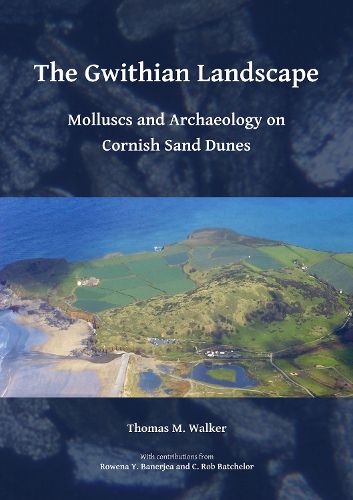Readings Newsletter
Become a Readings Member to make your shopping experience even easier.
Sign in or sign up for free!
You’re not far away from qualifying for FREE standard shipping within Australia
You’ve qualified for FREE standard shipping within Australia
The cart is loading…






Gwithian, on the north coast of Cornwall, is a multiperiod archaeological site. Excavations by Charles Thomas in the mid-twentieth century provided evidence of human activity from the Mesolithic to the post-medieval period. The present work explores the palaeoenvironment of the area around the settlement sites, from the Neolithic, when sand dunes initially developed in the Red River valley, to the present post-industrial landscape. Multiproxy analyses on sediments from coring, a test pit and mollusc columns provide a view of the changing landscape and how it may have influenced, or been influenced by, human presence and settlement. Mollusc studies are used as the principal analytical method. Multiple radiocarbon and optically stimulated luminesce dates permit these changes to be studied on a tighter time frame than was previously possible. Mining activity from the Bronze Age to the present is explored using fine-resolution geochemistry. Dating allows the timing of the extinction and introduction of some mollusc species to be refined.
$9.00 standard shipping within Australia
FREE standard shipping within Australia for orders over $100.00
Express & International shipping calculated at checkout
Gwithian, on the north coast of Cornwall, is a multiperiod archaeological site. Excavations by Charles Thomas in the mid-twentieth century provided evidence of human activity from the Mesolithic to the post-medieval period. The present work explores the palaeoenvironment of the area around the settlement sites, from the Neolithic, when sand dunes initially developed in the Red River valley, to the present post-industrial landscape. Multiproxy analyses on sediments from coring, a test pit and mollusc columns provide a view of the changing landscape and how it may have influenced, or been influenced by, human presence and settlement. Mollusc studies are used as the principal analytical method. Multiple radiocarbon and optically stimulated luminesce dates permit these changes to be studied on a tighter time frame than was previously possible. Mining activity from the Bronze Age to the present is explored using fine-resolution geochemistry. Dating allows the timing of the extinction and introduction of some mollusc species to be refined.